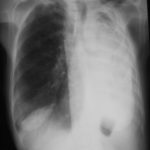Date: 26 November 2013
Copyright: n/a
Notes:
Professor
Department of Medical Microbiology
University of Wisconsin
My research focus lies in genetically dissecting those aspects of Aspergillus spp. that render them potent pathogens and superb natural product machines. My laboratory’s research includes elucidation of fungal sporulation and host/pathogen interactions; processes intimately linked to secondary metabolite (e.g. mycotoxin) production. My tactic has been to use the genetic model Aspergillus nidulans to elucidate important biological processes in this genus and then carry this information to the plant pathogens A. flavus and A. parasiticus and the human pathogen A. fumigatus. The former two pathogens contaminate seed crops worldwide with aflatoxin, the most potent naturally occurring carcinogen known. The latter pathogen is now tied with Candida as the most serious human mycopathogen in developed countries where it can cause invasive aspergillosis, a disease with a mortality rate ranging from 50 to 90%.
Areas of fungal biology that my lab has been central in developing include:
I. Genetic Regulation of Secondary Metabolism and the Role of Toxic Metabolites in Fungal Virulence.
- Bok J.-W, Balajee S A, Marr K A, Andes D, Fog Nielsen K. Frisvad J C. Keller N P (2005) LaeA, a regulator of morphogenetic fungal virulence factors. Euk Cell 4:1574-1582.
- Perrin RM, Fedorova ND, Bok JW, Cramer RA, Wortman JR, Kim HS, Nierman WC, Keller NP. (2007) Transcriptional regulation of chemical diversity in Aspergillus fumigatus by LaeA. PloS Pathogens Apr;3(4):e50.
- Shwab E., Bok JW, Tribus M, Galehr J, Graessle S, Keller NP. (2007) Histone deacetylase activity regulates chemical diversity in Aspergillus. Euk Cell 6:1656-64
II. Gene silencing processes.
- Hammond T M, Bok J-W, Andrewski MD, Reyes-Domínguez Y, Scazzocchio C, Keller NP. (2008) RNA silencing gene truncation in the filamentous fungus Aspergillus nidulans. Euk Cell Dec 7(2):339-49
- Hammond T M, Andrewski MD, Roossinck M, Keller NP. (2008) Aspergillus mycoviruses are targets and suppressors of RNA silencing. Euk Cell 2007 7(2):350-7
- Bok JW, Noordermeer D, Kale S P, Keller NP (2006) Secondary metabolic gene cluster silencing in Aspergillus nidulans. Mol Microbiol 61:1636-1645
III. Host/fungal signaling.
- Tsitsigiannis D I, Bok J-W, Andes D, Fog Nielsen K, Frisvad J C, Keller N P (2005) Aspergillus cyclooxygenase-like enzymes are associated with prostaglandin production and virulence. Infect Immun: 73:4548-4559.
- Brodhagen M, Tsitsigiannis D, Hornung E, Goebel C, Feussner I, Keller NP. (2008) Reciprocal oxylipin-mediated cross talk in the Aspergillus/seed pathosystem. Mol Microbiol 67:378-391
Contact details:
Nancy Keller
Professor
3476 Microbial Science Building
Department Medical Microbiology and Immunology
Department of Plant Pathology
UW-Madison
1550 Linden Dr., Madison, WI 53706
phone (608) 262-9795
fax (608) 262-8418
npk@plantpath.wisc.edu
Images library
-
Title
Legend
-
Pt AR Interval development of chronic cavitary pulmonary aspergillosis in the context of sarcoidosis
This patient was diagnosed with sarcoid after developing a chronic cough with the attached chest X-ray. In February 2003 the X-ray demonstrated bilateral extensive changes consistent with fibrocystic sarcoidosis with a complex cavitary area in both apices, more marked on the right. She was given a course of corticosteroids.
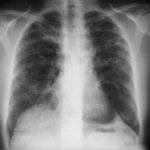
-
Further details
Image B. Additional cavities are apparent inferior to this large cavity and are in communication both with the bronchi and the additional cavities. Some of the apparent cavities are probably dilated bronchi. The left lower lung is completely opacified otherwise. The degree of pleural fibrosis surrounding the left apical cavity is reduced slightly over the interval of four months.
Image C. This shows an almost normal hyperexpanded right lung with a very substantially contracted left lung with one large airway visible and probably incontinuity with a slightly irregular cavity containing some debris, presumably fungal tissue. Other levels show very large left apical cavity with numerous subsections containing debris or fibrotic tissue and almost complete fibrosis of the lung below the level of the carina on the left, with some calcification within the fibrotic lung tissue.
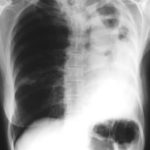 ,
,  ,
, 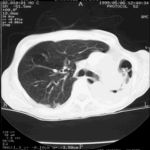
-
Transverse sections through the thorax of a patient with AIDS, hepatitis C and a left tempero-parietal cerebral lymphoma. His CD4 cell count was 45 x 106 / l. The lymphoma was proven by biopsy after a poor response to anti-toxoplasma therapy. He was given dexamethasone to cover the surgery and then developed diabetes mellitus. He did not receive chemotherapy for his lymphoma but did have 2 cerebral radiotherapy treatments (1.8 Gy each). Three weeks after the biopsy he developed dyspnoea and fever. Shortly after this he developed a right-sided hemiparesis, became comatose and died 2 days later.Autopsy showed a cerebral lymphoma and pulmonary and renal aspergillosis. Aspergillus nidulans was recovered from cultures of lungs and kidney.
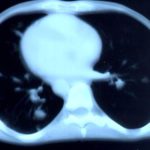 ,
, 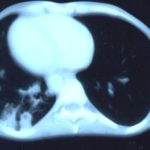 ,
,  ,
, 
-
Fever chart of Pt CA -heart transplant pt with candidemia on amphotericin therapy, who developed pulmonary aspergillosis.

-
A Colonies on MEA + 20% sucrose after two weeks; B ascomata, x 40; C conidia and conidiophore, x 920; D ascospores and conidia x2330; E portion of ascoma with asci x920

-
A 66 yr old patient in good general health developed onychomycosis. Samples taken from the affected nail were grown by culture and examined by microscopy. Oral itraconazole pulse therapy was given to the patient (200 mg twice daily for 1 week, with 3 weeks off between successive pulses, for four pulses) and treatment was successful.
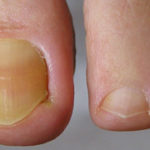



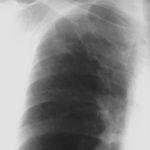 ,
,  ,
, 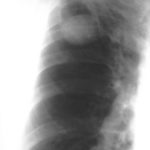 ,
, 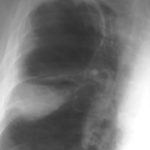 ,
,  ,
, 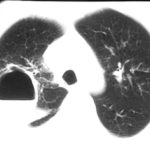
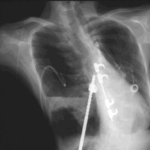
 ,
, 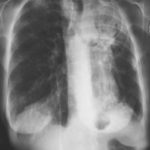 ,
, 